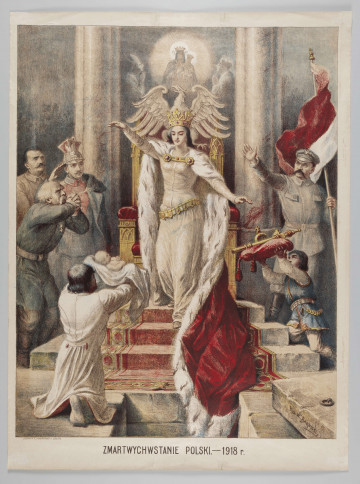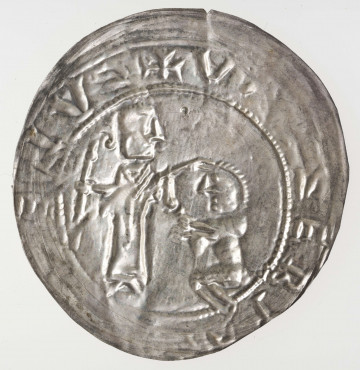
Denarius of Władysław II
1140 — 1143
National Museum in Lublin
Part of the collection: Money on Polish territory in the Middle Ages
After the overthrow of the senior Wladyslaw II (1138-1146), the oldest of the juniors, Bolesław IV the Curly (1146-1173), assumed supreme power in Poland divided into districts. Among his powers was the exclusive right to issue money.
During the twenty-seven years of his reign, Bolesław IV the Curly issued several types of denars, distinguished by their images. Their issue was accompanied by an exchange of the previous type, carried out according to a conversion scheme favourable to the prince (for example, three old denarii for two new ones). The practice implemented in Poland from the beginning of the 12th century gave the rulers a significant income, usually at the level of several dozen percent. The exchange of money was a kind of tax imposed on subjects and caused social discontent that could develop into open rebellion. For this reason, under the influence of the magnates, Bolesław IV the Curly did not follow in the footsteps of his predecessor, and significantly reduced the frequency of the exchange of money, most likely making it every four to five years.
The first issue of Bolesław IV the Curly was the denarius discussed here, depicting the prince on the throne with a sword on his knees, dated 1146-1152. Such a presentation of the ruler on the denarii inaugurating the reign was the rule in Poland at that time, as well as in Bohemia, where the models were drawn from. The image of the prince, through its direct association with the image of Christ the King on the majesty, most fully reflected the sacral character of his reign. The prince's power was emphasised by the sword, an expression of his judicial supremacy, just rule, readiness to defend the Church and the faithful against physical and spiritual evil. Placing the head of St Adalbert in the reliquary on the reverse most probably had a propaganda purpose. It was a response to the news about the alleged discovery of the head of St Adalbert in Prague in 1143, which undermined the position of the Gniezno metropolis. The coin was to confirm the presence of the head of the patron of Poland in Gniezno, discovered there in 1127.
The discussed denarius may have been minted not in Kraków, but in Gniezno. This is supported by the findings of coins of this type. They are grouped outside Lesser Poland, mainly in Greater Poland. Denars of Prince Bolesław were in use for several dozen years, at the latest until the turn of the 12th and 13th centuries.
Tomasz Markiewicz
Author / creator
Dimensions
cały obiekt: diameter: 15,9 mm
Object type
numismatic
Technique
stamp minting
Material
silver
Creation time / dating
Creation / finding place
Owner
The National Museum in Lublin
Identification number
Location / status

1140 — 1143
National Museum in Lublin

1918
National Museum in Lublin

1135
National Museum in Lublin
DISCOVER this TOPIC
Museum of King Jan III's Palace at Wilanów
DISCOVER this PATH
Educational path